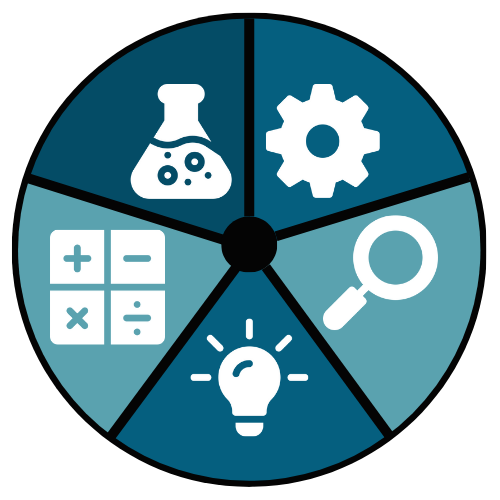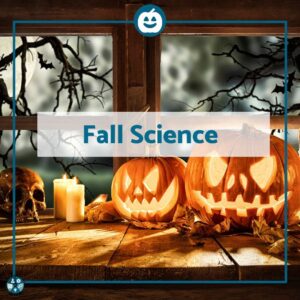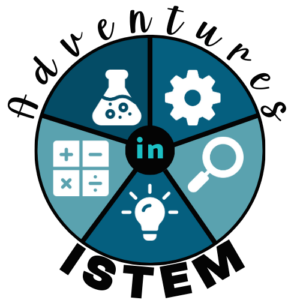It’s back to school time, and that means it’s time to reintroduce students to key science skills like the scientific method. There are some simple and engaging scientific method experiments you can have your students do where they practice the key steps of the scientific method process.
The scientific method is a process that allows students to figure things out about the world. They can use it to solve problems and learn more about what’s around them.
It starts with making observations. Then, they ask questions about what they are seeing. From there, they make an educated guess as to why the observing the phenomenon and what is causing it. They create a controlled experiment to test their hypothesis where they gather data and more observations. Next, they analyze the data to look for patterns and answers. Finally, they draw their conclusions and share their findings.
Scientific Method Experiment 1: Paper Towel Test Strength
Growing up, for us, it was commercials that were designed to tell us which brand is best and why. Now, with TikTok and other social media, it is important for students to fact-check what they are seeing. I like to show students old paper towel commercials and then have students create scientific method experiments to test the claims.

- First, I will show them one or two paper towel commercials that claim their brand is the best for strength and not tearing while it cleans the mess.
- Then, the students turn the commercial claim into a hypothesis.
- From there, they design a test to test the claim. I usually provide four to five different towels, including the brown school paper towel and a generic store brand towel. I also provide different types of weights like marbles, washers, or pennies.
- The students perform their paper towel experiments and collect data.
- They then analyze the data and then use the evidence to determine if the commercial claim is true or false.
Scientific Method Experiment 2: Paper Towel Test Absorbancy
This is just like the strength test, but it focuses on the paper towels ability to absorb a spill. The steps are the same as the other test. You could have half the class doing one test and the other half of the class doing the other test. This way, you are using a lot of the same materials, and students can compare their results. In the end, you could see if they can create a test to determine which is the best paper towel for strength and absorbency.

- First, I will show them one or two paper towel commercials that claim their brand is the best for absorbing a mess over the other.
- Then, the students turn the commercials claim into a hypothesis.
- From there, they design a test to test the claim. I usually provide four to five different towels, including the brown school paper towel and a generic store brand towel.
- The students perform their experiments and collect data.
- They then analyze the data and then use the evidence to determine if the commercial claim is true or false.
Scientific Method Experiment 3: Grow that gummy
I find that students love doing labs that involve food. They especially like eating the leftover candies that weren’t used when the experiment is over. For this scientific method experiment, students use gummy candy and different liquids to determine which one will make the gummy candy grow the largest.

- Start off by having the students make a hypothesis as to which type of liquid will make the gummy candy grow the largest. For liquids, you could use water, salt water, vinegar, milk, soda, juice, and vegetable oil.
- Then, have students design an experiment that will test their hypothesis. Have them share ideas for how they will measure the gummy and what factors will need to be controlled.
- Students will conduct the experiment and record their observations.
- They will then analyze the results and draw conclusions as to which liquid made the gummy candy grow the largest.
- Students will then share their results and compare their results and tests with other groups. This step is important because if they created a controlled experiment, they should draw the same conclusions even though the actual data numbers might be different or the way they designed the test might be different.
Scientific Method Experiment 4: Candy Letter Lab
My students are always fascinated by this lab. Students act like magicians as they have the letters on the candy levitate to the top of the liquid without touching the candy.
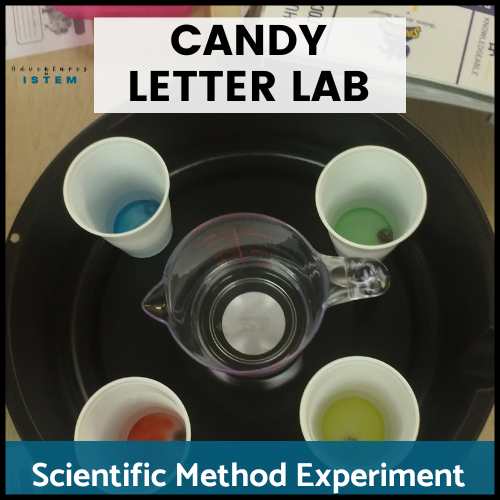
- Start by using hard candy that has a letter or word stamped on it. I find that Skittles and M&M’s work best for this. You might want to have some groups test Skittles while others test M&M’s to see if they get different results.
- Have students create a hypothesis for which liquid they think will be the best at removing the letter from the candy.
- Next, students will design an experiment that will test their hypothesis.
- Students will conduct the experiment and record their observations.
- They will then analyze the results and draw conclusions as to which liquid was the fastest at removing the letter from the candy.
- Students will then share their results and compare their results and tests with other groups.
Scientific Method Experiment 5: Where did the stripes go?
This is a great lab to do during the winter holidays when candy canes are in more abundance. In this lab, the students design scientific method experiments to see which liquid will remove the stripes from the candy cane the fastest.
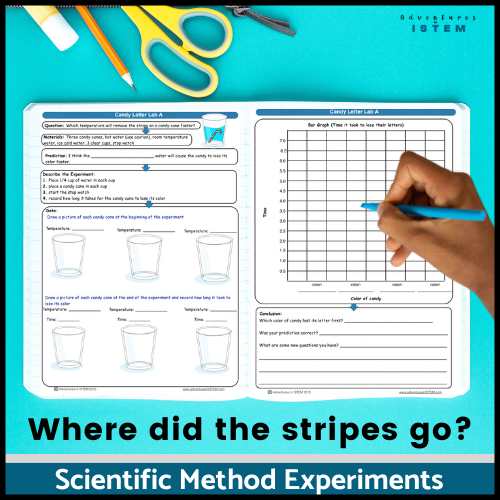
- Start by using a regular candy cane or red and white peppermint candy. I find the mini candy canes work the best and are not that expensive when you buy them in bulk.
- Have students create a hypothesis for which liquid they think will be the best at removing the red stripes from the candy cane.
- Next, students will design an experiment that will test their hypothesis.
- Students will conduct the experiment and record their observations.
- They will then analyze the results and draw conclusions as to which liquid was the fastest at removing the stripes from the candy cane.
- Students will then share their results and compare their results and tests with other groups.
Scientific Method Experiment 6: Growing plants
One scientific method experiment that is good to do at the beginning of a long unit is growing plants from seeds. This takes a while to see results, so it’s one that you will want to start and then check on periodically over a few weeks.
The best seeds to use for this would be green beans, spinach, lettuce, or radish. They have short germination periods. To start, students can discuss what plants need to grow and thrive. They can come up with a variety of different questions about how different factors might affect plant growth.

- Have students choose one question they want to test.
- Then, students create a hypothesis for their question.
- Next, students will design an experiment that will test their hypothesis.
- Students will conduct the experiment and record their observations.
- They will then analyze the results and draw conclusions to determine if their hypothesis was supported or not supported.
- Students will then share their results and compare their results and tests with other groups.
Scientific Method Experiment 7: Pendulum swing
This lab is great for students to determine not only the hypothesis but also the question. You might want to start off with a demonstration of a single pendulum. You can then start an “I Wonder” session. I wonder how adding more weight affects the number of swings? I wonder how adding more weight affects the time it takes a pendulum to swing back and forth 10 times. Have students come up with their own I Wonder questions. Once you have a good list, they can then choose one of them that they would like to test and investigate.
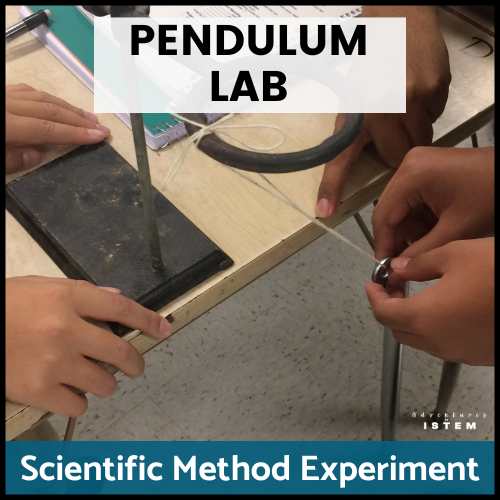
- Have students create a hypothesis for their question.
- Next, students will design an experiment that will test their hypothesis.
- Students will conduct the pendulum experiment and record their observations.
- They will then analyze the results and draw conclusions to determine if their hypothesis was supported or not supported.
- Students will then share their results and compare their results and tests with other groups.
Scientific Method Experiment 8: Crystal Growing
This is another lab I like to do before winter break. Students can not only practice the steps of the scientific method, but they can also create ornaments or sun catchers that they can then take home. In this scientific method experiment, students will be given different questions about crystals and decide which question they would like to test.
- Possible questions you could use.
- Does the type of solution affect the amount of crystal growth?
- Does the type of solution affect the size of the crystals?
- Does the level of saturation affect the amount of crystal growth?
- Does the level of saturation affect the size of the crystals?
- Does the temperature of the solution affect the amount of crystal growth?
- Does the temperature of the solution affect the size of the crystals?
- Next, students will design an experiment that will test their hypothesis.
- Students will conduct the experiment and record their observations.
- They will then analyze the results and draw conclusions to determine if their hypothesis was supported or not supported.
- Students will then share their results and compare their results and tests with other groups.
Why Teach the Scientific Method
Having students practice using the steps of the scientific method helps them to develop the soft skills that they will need outside of school and when they enter adulthood.
- Critical thinking skills- Being able to analyze data, draw conclusions, and make evidence-based decisions.
- Problem-solving abilities- approaching challenges using a systematic approach by identifying the problem, forming a hypothesis, and finding solutions.
- Communication skills- communicating effectively their findings and using evidence to support their conclusions.
Practicing the steps of the scientific method provides middle school students with a host of valuable benefits that extend beyond the classroom. Engaging in scientific method experiments such as testing paper towel strength and absorbency, growing crystals, and investigating candy properties helps students develop critical thinking skills, problem-solving abilities, and effective communication.
These skills are vital for their future endeavors, enabling them to make evidence-based decisions, tackle real-life challenges, and express their findings clearly. Embracing the scientific method empowers students to explore the world around them and equips them with essential skills for success in adulthood.
For more tips on teaching the scientific method check out this other blog post: How to use science stations to teach the scientific method.
You might also find the following Youtube videos helpful.
Don’t have time to put together a full unit of lessons for the scientific method? I have you covered with my scientific method 5E science lesson that will have your students engaged in lots of activities for the next four weeks.
